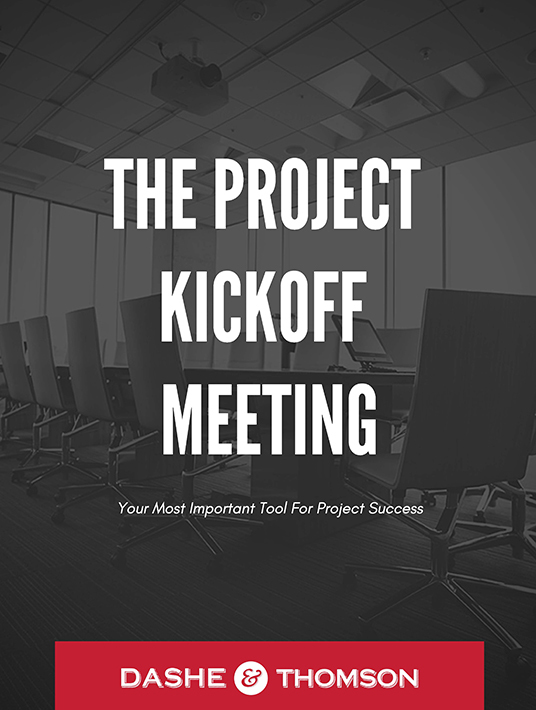Why A Project Debrief For L&D Project Managers Is Essential
As eLearning Project Managers, you know that doing project debriefs helps your teams learn and improve. But did you know that the best reason for doing a project debrief has to do with the Law of Closure? I don’t mean closure in the context of warm fuzzies but in the context of Gestalt psychology. According to the Law of Closure, when parts of a whole picture are missing, our perception completes the picture for us [1]. As eLearning Project Managers, you want to make every effort to fill in those gaps for your stakeholders.

An Antidote Τo Misunderstandings Αnd Bad Impressions
As stated above, at the most basic level, the purpose of the debrief is for stakeholders to put the project into perspective. Since you are the Project Manager, your perception of the project is probably the most complete. Your stakeholder's perceptions, however, are based on their individual experiences. That is, how and when they contributed to the project. For instance, did one stakeholder serve on the project from start to finish? Were others only there for kickoff and final approval? Or perhaps you had several Subject Matter Experts participate in a single phase of the project. But wait, there’s more. Not only will perceptions differ from stakeholder to stakeholder, but they may also contain incomplete information.
Combined, this can lead to misunderstanding and leave a bad impression of your project. The project debrief is your tool to ensure stakeholders’ lasting impression of your project is based on complete information.
How Τo Complete Τhe Picture For Stakeholders Ιn Your Project Debrief
You can do 3 things during your project debrief meeting to complete the picture for your stakeholders.
1. Make Sure They Know It Took A Village To Create The eLearning Course
This is important for those stakeholders who showed up at project kickoff and then disappeared until the final approval phase. You want them to see the whole picture so that they don’t overvalue one component at the expense of others.
For example, a stakeholder focused on visual or interactive components may not be aware of the preceding Instructional Design efforts. On the next eLearning project, this stakeholder may opt to shortchange the Instructional Design phase and get an inferior deliverable as a result.
2. Make Sure They Know What Went Well
This is especially important when a stakeholder’s involvement was limited to a part of the process that didn’t go so well. You want that stakeholder to hear about the other phases that surpassed expectations so that their perception isn’t based on their small slice of reality. Think about it: if this stakeholder decides whether future eLearning projects get funded, you want to fill in the gaps with all the things that went well.
3. Make Sure They Know What Did Not Go Well
We all know not every project goes as smoothly as planned. When that happens, often the Project Manager gets put on the spot. As eLearning Project Managers, we know that other stakeholders may be more deserving of the hot seat. You know who I’m talking about: the stakeholder who is terrible at time management and meeting deadlines. Or the stakeholders who suddenly remembers critical content and insists on adding it at the 11th hour. In those situations, the project debrief empowers you to make these actions (or inactions) visible. There are two things I really like about this; one, it eliminates stakeholder assumptions that are not based on data, and two, the whole team can see how each stakeholder’s actions contribute to making or breaking a project.
Conclusion
When you facilitate the project debrief with the Law of Closure in mind, you give the stakeholders a sense of accomplishment and closure [2]. In fact, they might even walk away with a warm and fuzzy feeling. That’s the kind of lasting impression we all want our stakeholders to leave with so they come back asking for more eLearning solutions. Take advantage of our eBook resource, Project Kickoff Meeting: Your Most Important Tool For Project Success, for valuable information and instructions to start your projects successfully, so you can finish them with debriefs that benefit everyone.
Read more:
How to Apply the 12 Agile Principles to L&D Project Management
References:
[1] Gestalt psychology
[2] The Project Closure Process and Why It's Important

